Leonardo studied and classified the different types of movements produced when combining several toothed wheels to be used in mechanisms producing differentiated speeds, such as for use in clocks or labor-saving machines.
This model is made up of five toothed wheels arranged on an inclined plane, four of which are mobile and one, fixed, at the center.
When the crank is turned, the largest wheel, called the planetary gear, is set in motion, drawing along with itself the other two wheels positioned radially. The median wheel engages with the fixed central one, transmitting movement to the external wheel, imparting motion in reversed direction.
Because of this, a point on the outermost wheel, while making rotational movement around its own axis, also travels along what is called an epicyclic curve with respect to the rim of the planetary wheel.
In ancient Ptolemaic astronomy, the epicycle indicated the name of one of the two circles described by a star in its motion.
Additionally, the outer wheel and the planetary wheel will have different speeds, owing to their different sizes and numbers of teeth.
Technical informations
Type of exhibit
Model
Collection
Material
Carved wood, metal, plastic
Measures
Width: 48 cm; Length: 48 cm; Depth: 30 cm.
Storage location
Relationship with the original work
Source: Leonardo da Vinci, Codex Atlanticus, f. 77 v
Inventory number
Record n. OA: 00000043
Location
Museo Leonardiano, Counts Guidi's castle, ground floor
Related exhibits
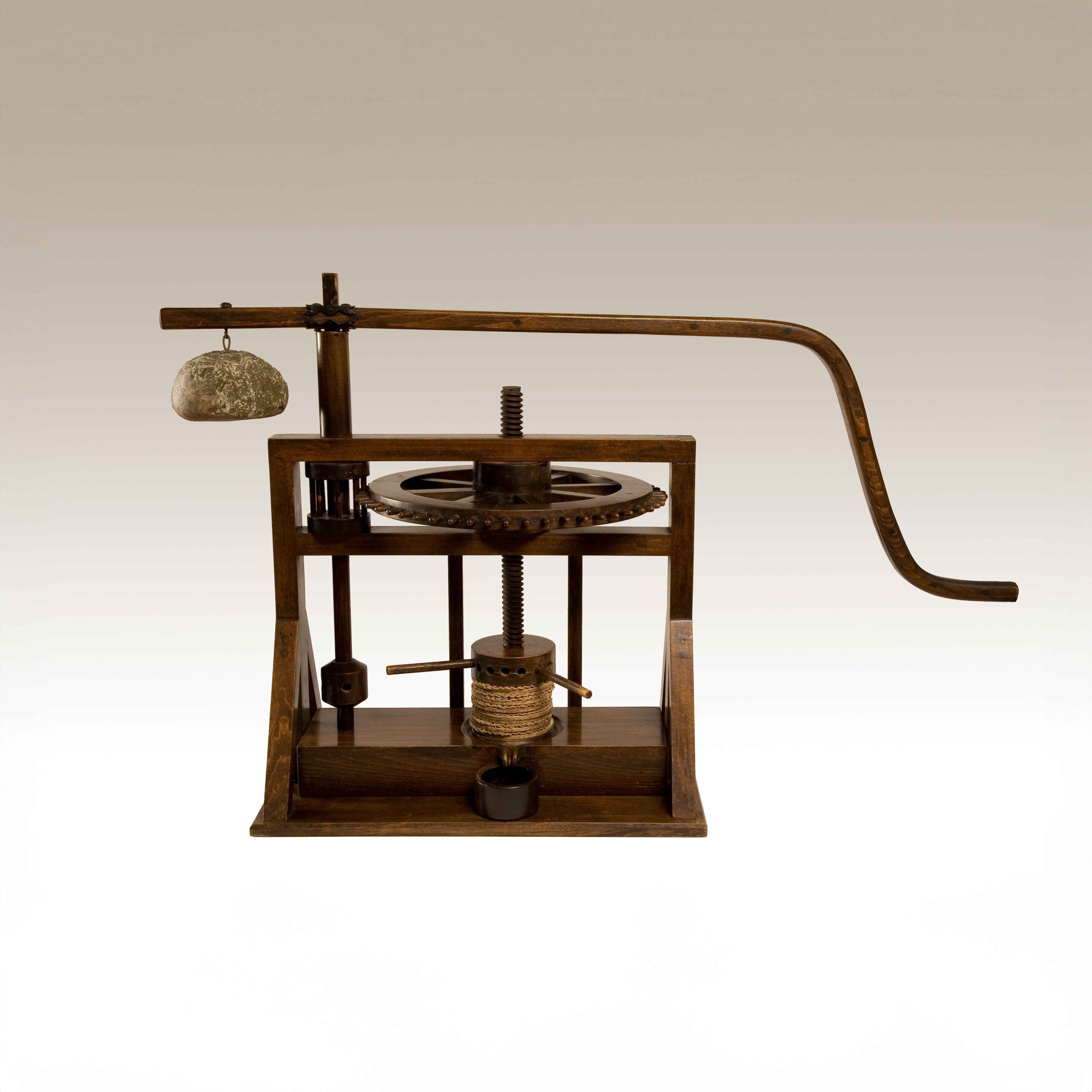
Olive oil press
Study for an epicyclic gearing system
1967
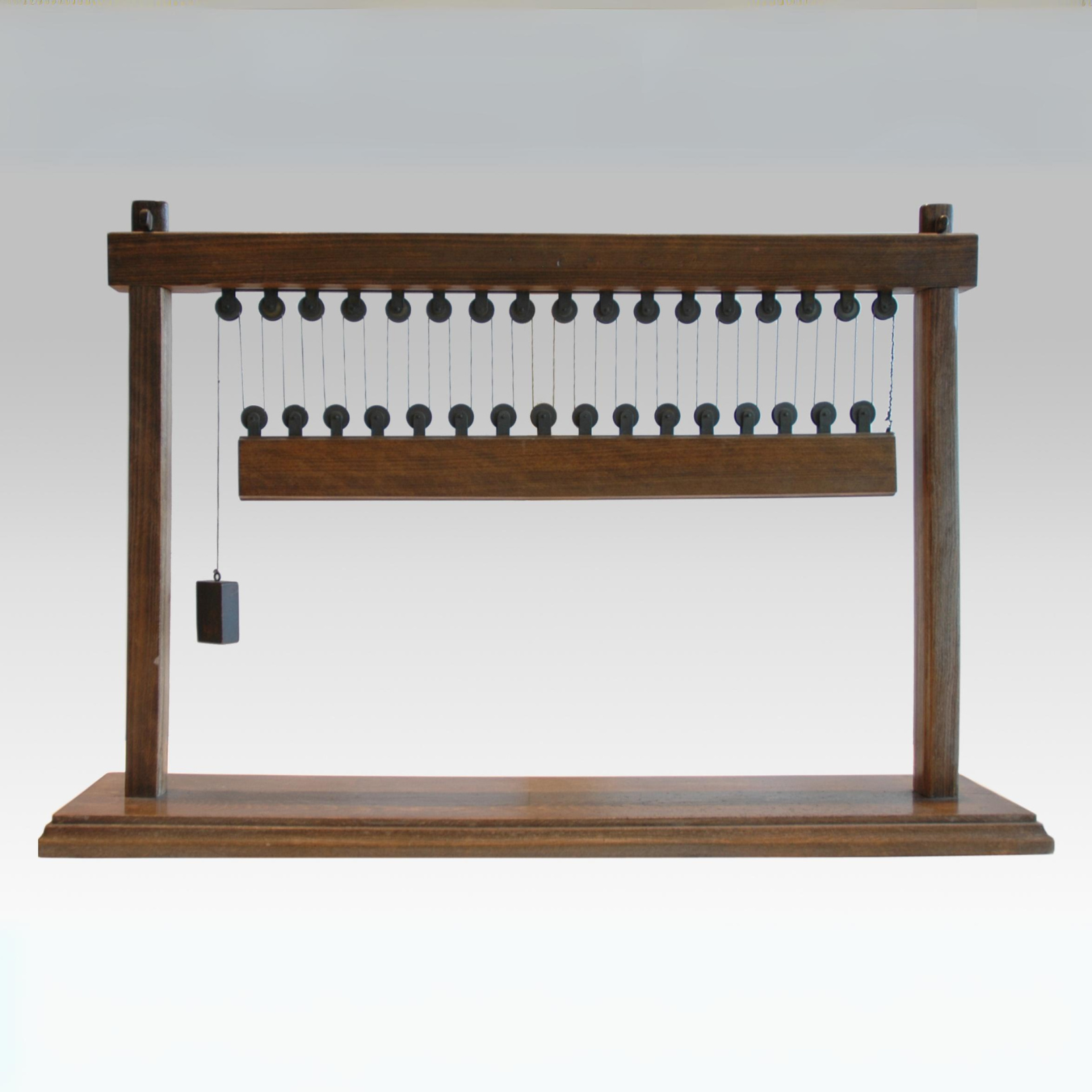
Composite pulling
Study for an epicyclic gearing system
1979

Revolving thrust bearings
Study for an epicyclic gearing system
2010
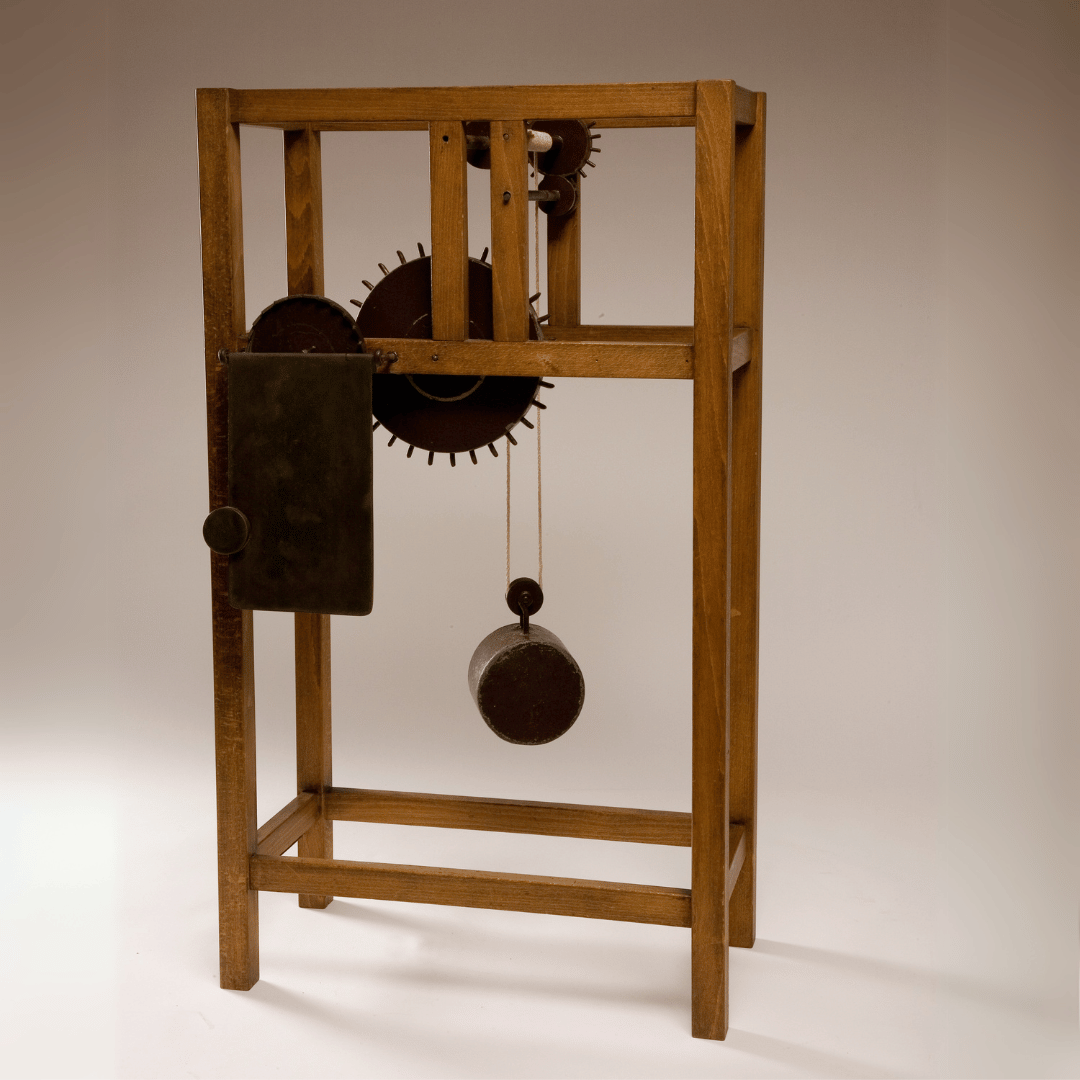
Fan
Study for an epicyclic gearing system
1964
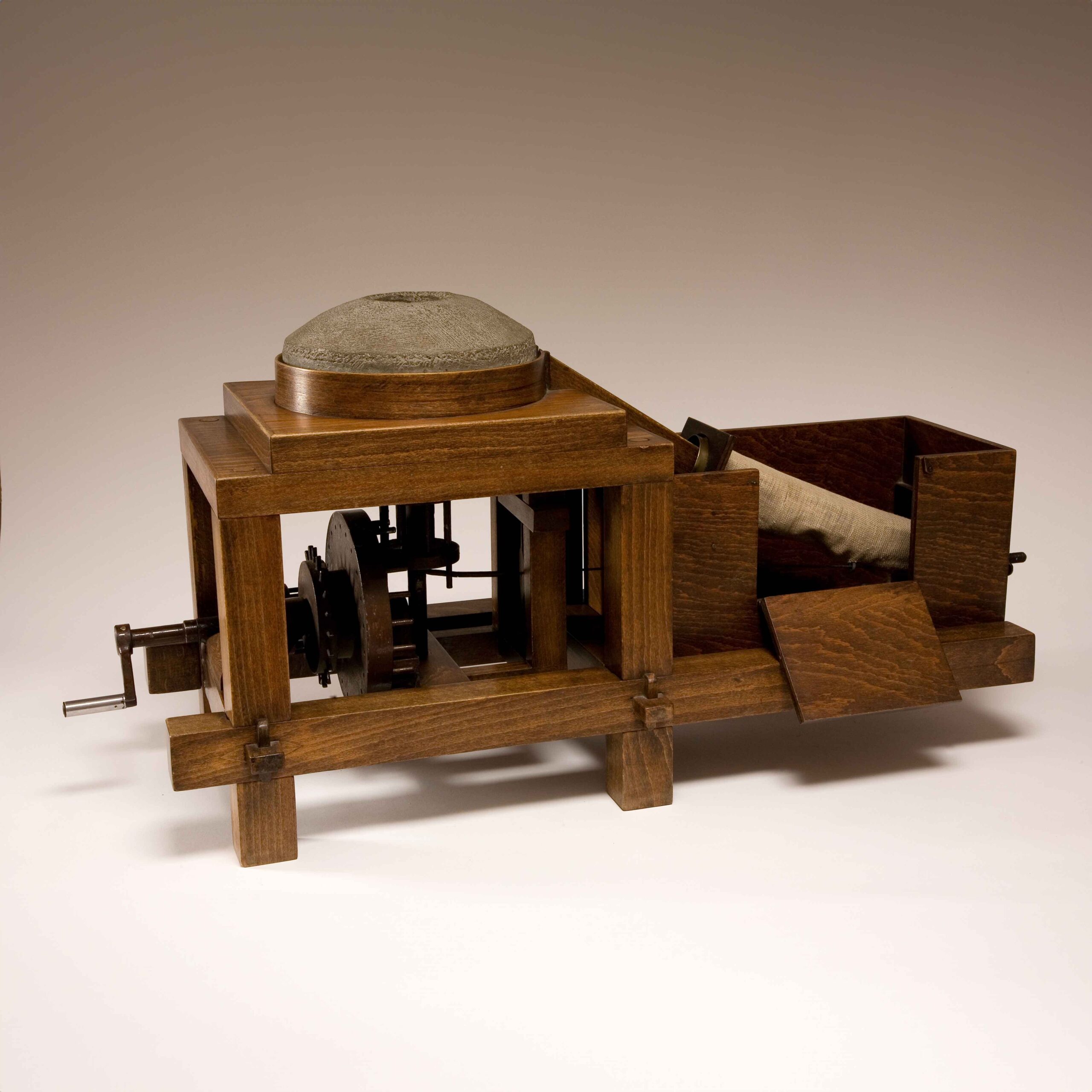
Mill with sifting sack
Study for an epicyclic gearing system
1972
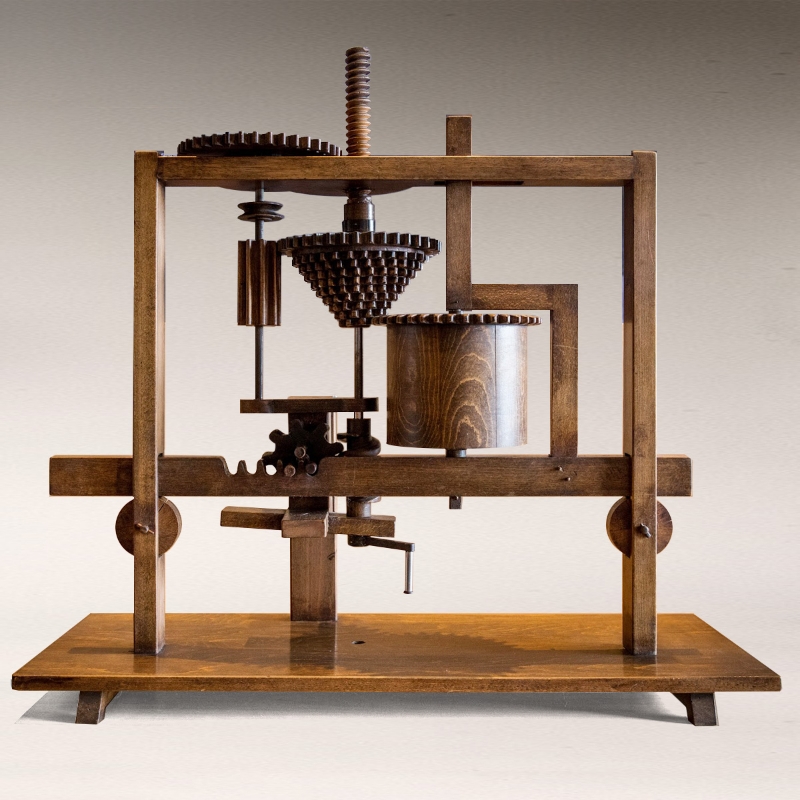
Stabilizer
Study for an epicyclic gearing system
1970
Last update: 11 November 2025, 12:15
